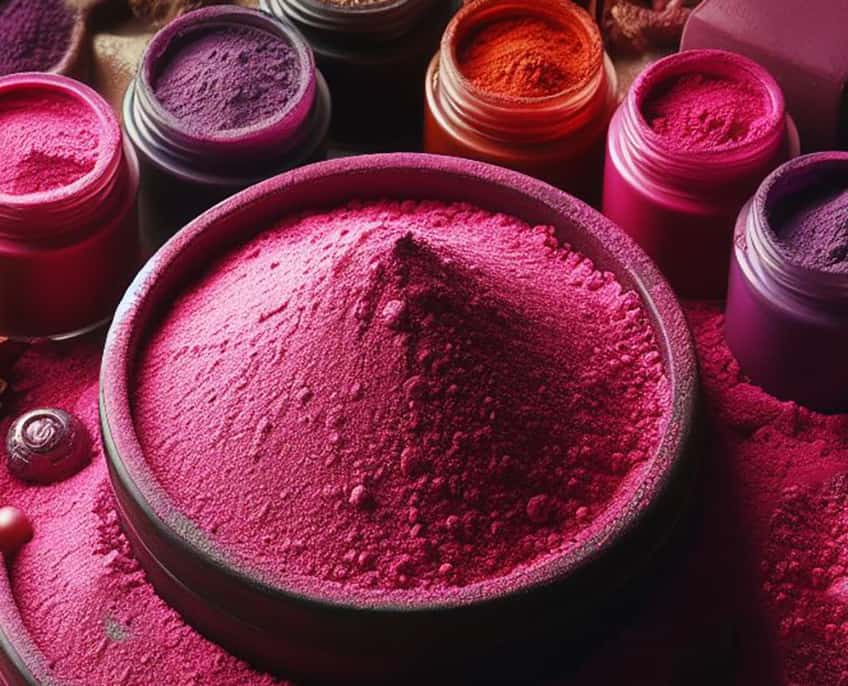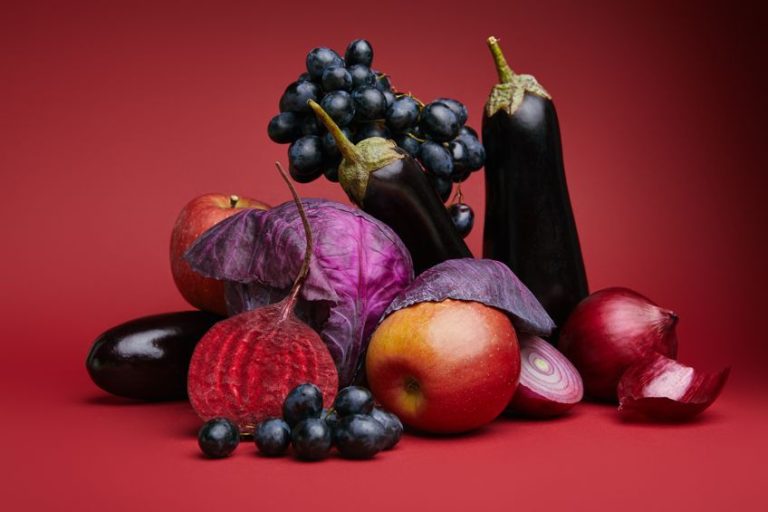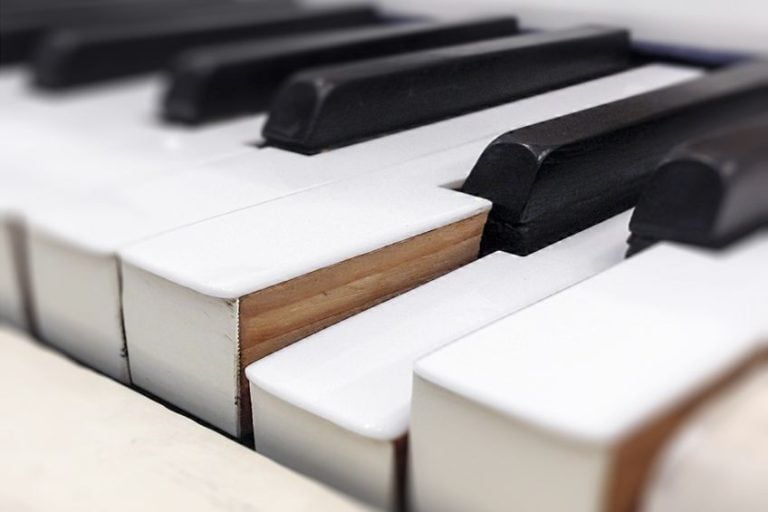What Colors Make Magenta? – 5 Easy Ways to Your Mix
As one of the most visually striking colors to grace our eyes, Magenta presents itself as a deep purple or dark pink shade. Come with us as we explore how to make magenta paint for yourself at home, including color mixing recipes for 25 popular shades of magenta.
5 Methods on How to Mix Magenta Color
Magenta is a vibrant color that can be mixed using various methods, depending on the medium and the desired shade. Here are some known methods to create magenta:
Primary Colors Method (Subtractive Color Mixing):
In traditional color theory for painters, magenta is considered a primary color, so it is not typically mixed from other colors in painting. However, in practice, you might create a magenta-like hue by mixing red and blue paint, although this often results in a violet shade rather than true magenta. The exact colors used can vary, but a bright red and a bright blue would be the starting point.

Mixing Quinacridone Rose or Pink with a Touch of Blue:
Some artists create a magenta-like color by mixing quinacridone rose or a similar pink with a small amount of blue.

Using Pre-mixed Pigments:
For artists and designers, purchasing pre-mixed magenta pigments is often the most reliable way to achieve a true magenta color, as it can be challenging to mix the perfect magenta shade by hand.

RGB Color Model (Additive Color Mixing)
In digital media and lighting, magenta can be created by combining red and blue light at equal intensity, which is representative of the additive color mixing process.
CMYK Color Model (Subtractive Color Mixing):
In printing, magenta is one of the primary colors and is typically not mixed but used as a base color. However, to adjust the shade of magenta, it may be combined with varying amounts of yellow or cyan.
Remember, the method you choose will depend on the medium you’re working with and the specific hue you’re trying to achieve. It’s also important to note that the perception of color can be subjective, and the exact formula for magenta may vary between different materials and color systems.
25 Mixing Recipes on How to Mix Popular Magenta Color Shades
| Shade Name | Mixing Recipe |
|---|---|
| Fuchsia | 2 parts Quinacridone Magenta, 1 part White |
| Deep Fuchsia | 2 parts Quinacridone Magenta, <1 part Ultramarine Blue |
| Deep Pink | 1 part Quinacridone Magenta, <1 part Ultramarine Blue, <1 part White |
| Bright Magenta | 2 parts Quinacridone Magenta, 1 part White, <1 part Primary Cyan |
| Neon Magenta | 1 part Quinacridone Magenta, 2 parts White |
| Electric Magenta | 1 part Quinacridone Magenta, 1 part White, <1 part Primary Cyan |
| Fluorescent Magenta | 1 part Quinacridone Magenta, <1 part White |
| Hot Magenta | 2 parts Quinacridone Magenta, <1 part Ultramarine Blue |
| Rose Red | 1 part Quinacridone Magenta, <1 part Alizarin Crimson |
| Deep Magenta | 1 part Quinacridone Magenta, <1 part Ultramarine Blue |
| Bright Rose | 1 part Quinacridone Magenta, <1 part Alizarin Crimson |
| Deep Fuchsia Pink | 1 part Quinacridone Magenta, <1 part Primary Cyan, <1 part White |
| Hot Pink | 1 part Quinacridone Magenta, 1 part White |
| Razzle Dazzle Rose | 1 part Quinacridone Magenta, <1 part Dioxazine Purple |
| Ruby Magenta | 1 part Quinacridone Magenta, <1 part Alizarin Crimson |
| Shocking Pink | 2 parts Quinacridone Magenta, <1 part White |
| Ultra Magenta | 1 part Quinacridone Magenta, 1 part White, <1 part Dioxazine Purple |
| Pink Flamingo | 1 part Quinacridone Magenta, 2 parts White, <1 part Lemon Yellow |
| Pink Lavender | 1 part Quinacridone Magenta, 1 part White, <1 part Ultramarine Blue |
| Purplish Magenta | 1 part Quinacridone Magenta, <1 part Dioxazine Purple |
| Violet Magenta | 1 part Quinacridone Magenta, <1 part Ultramarine Blue, <1 part White |
| Crimson Magenta | 1 part Quinacridone Magenta, <1 part Cadmium Red |
| Cerise | 1 part Quinacridone Magenta, <1 part Alizarin Crimson |
| Magenta Rose | 1 part Quinacridone Magenta, <1 part Primary Cyan, <1 part White |
| Magenta Pink | 2 parts Quinacridone Magenta, 1 part White, <1 part Lemon Yellow |
How to Make Magenta with the Primary Colors Method
To make magenta paint, you will mix red and blue, the two primary colors that combine to create this vibrant hue. Red, with its hex code #ff0000, is a powerful color associated with passion, desire, and also with warning and urgency due to its ability to attract attention. Blue, with its hex code #0000ff, brings calmness, peace, and is often linked to intelligence and wisdom, as it is reminiscent of the sky and ocean.
When these colors blend, they produce magenta, a color that can evoke a range of emotions and is versatile for artists to convey different feelings in their work. To achieve magenta, you start with a base of red paint on your palette, which you can get from primary red paint or by mixing yellow and blue. Then, add blue paint, available as a primary color or mixed from green and red.
As you mix red and blue, you’ll see a variety of shades emerge until you reach your desired magenta. For a lighter magenta, incorporate a small amount of white paint. To darken it, add more red or blue paint to the mixture. This process allows for customization and exploration of the depth of magenta shades.

Frequently Asked Questions
How Did Magenta Get Its Name?
While the color magenta was first referred to as fuchsine, derived from the fuchsia flower, magenta would later be named after the town of Magenta in Milan, Italy. The name was given to the color after a battle between France and Austria left the surrounding fields covered in a deep red, a shade similar to that of what is now known as magenta.
When Did Magenta Become Popular?
The color magenta grew in popularity during the mid-19th century when the French chemist, François-Emmanuel Verguin, first synthesized the pigment in an attempt to combat the textile industry’s growing demand for bright and vibrant colors. At the time, this color was merely named fuchsine, after the fuchsine flower that displayed similar shades.
In 2005, Charlene completed her Wellness Diplomas in Therapeutic Aromatherapy and Reflexology from the International School of Reflexology and Meridian Therapy. She worked for a company offering corporate wellness programs for a couple of years, before opening up her own therapy practice. It was in 2015 that a friend, who was a digital marketer, asked her to join her company as a content creator, and this is where she found her excitement for writing.
Since joining the content writing world, she has gained a lot of experience over the years writing on a diverse selection of topics, from beauty, health, wellness, travel, and more. Due to various circumstances, she had to close her therapy practice and is now a full-time freelance writer. Being a creative person, she could not pass up the opportunity to contribute to the Art in Context team, where is was in her element, writing about a variety of art and craft topics. Contributing articles for over three years now, her knowledge in this area has grown, and she has gotten to explore her creativity and improve her research and writing skills.
Charlene Lewis has been working for artincontext.org since the relaunch in 2020. She is an experienced writer and mainly focuses on the topics of color theory, painting and drawing.
Learn more about Charlene Lewis and the Art in Context Team.
Cite this Article
Charlene, Lewis, “What Colors Make Magenta? – 5 Easy Ways to Your Mix.” Art in Context. January 19, 2023. URL: https://artincontext.org/what-colors-make-magenta/
Lewis, C. (2023, 19 January). What Colors Make Magenta? – 5 Easy Ways to Your Mix. Art in Context. https://artincontext.org/what-colors-make-magenta/
Lewis, Charlene. “What Colors Make Magenta? – 5 Easy Ways to Your Mix.” Art in Context, January 19, 2023. https://artincontext.org/what-colors-make-magenta/.









